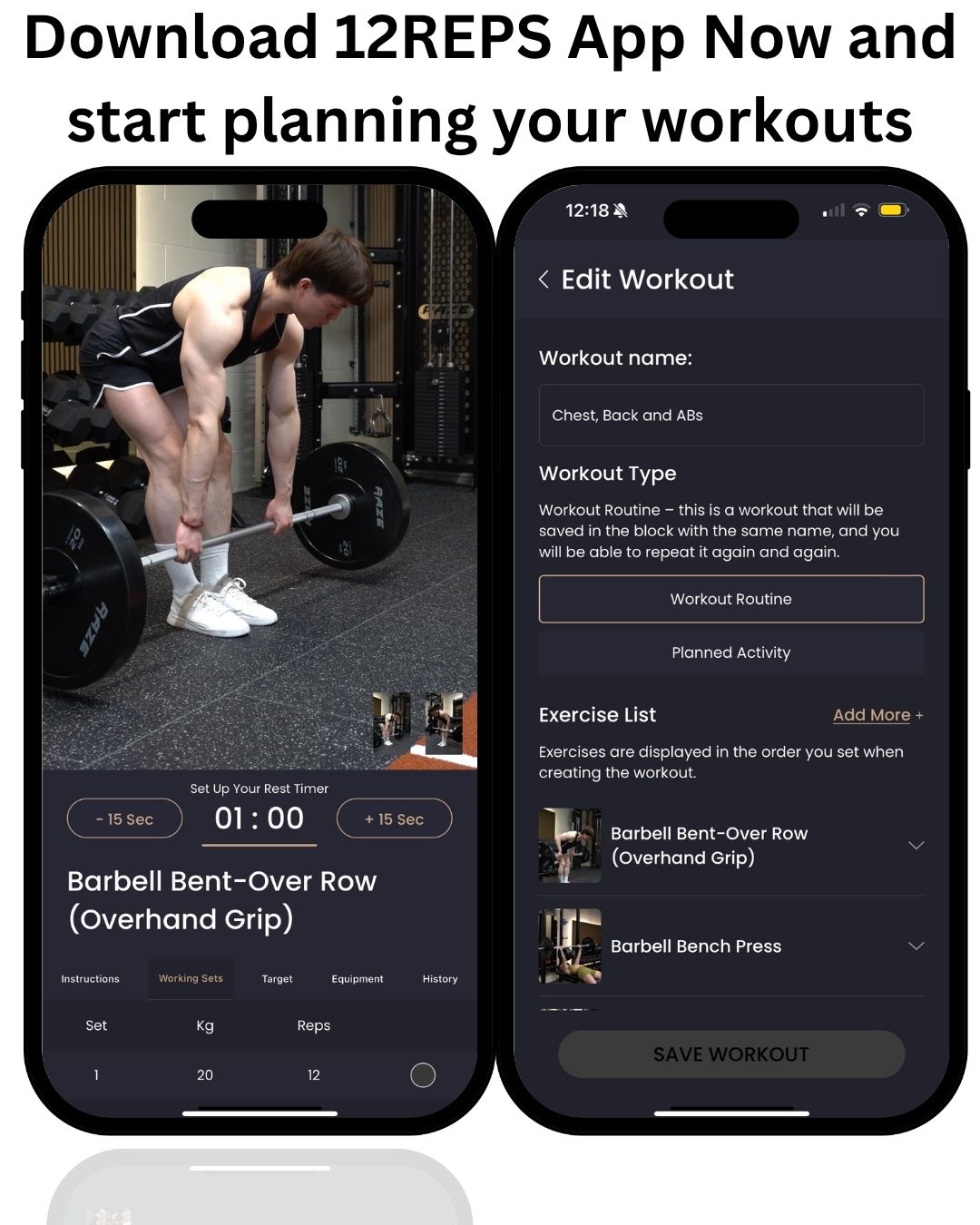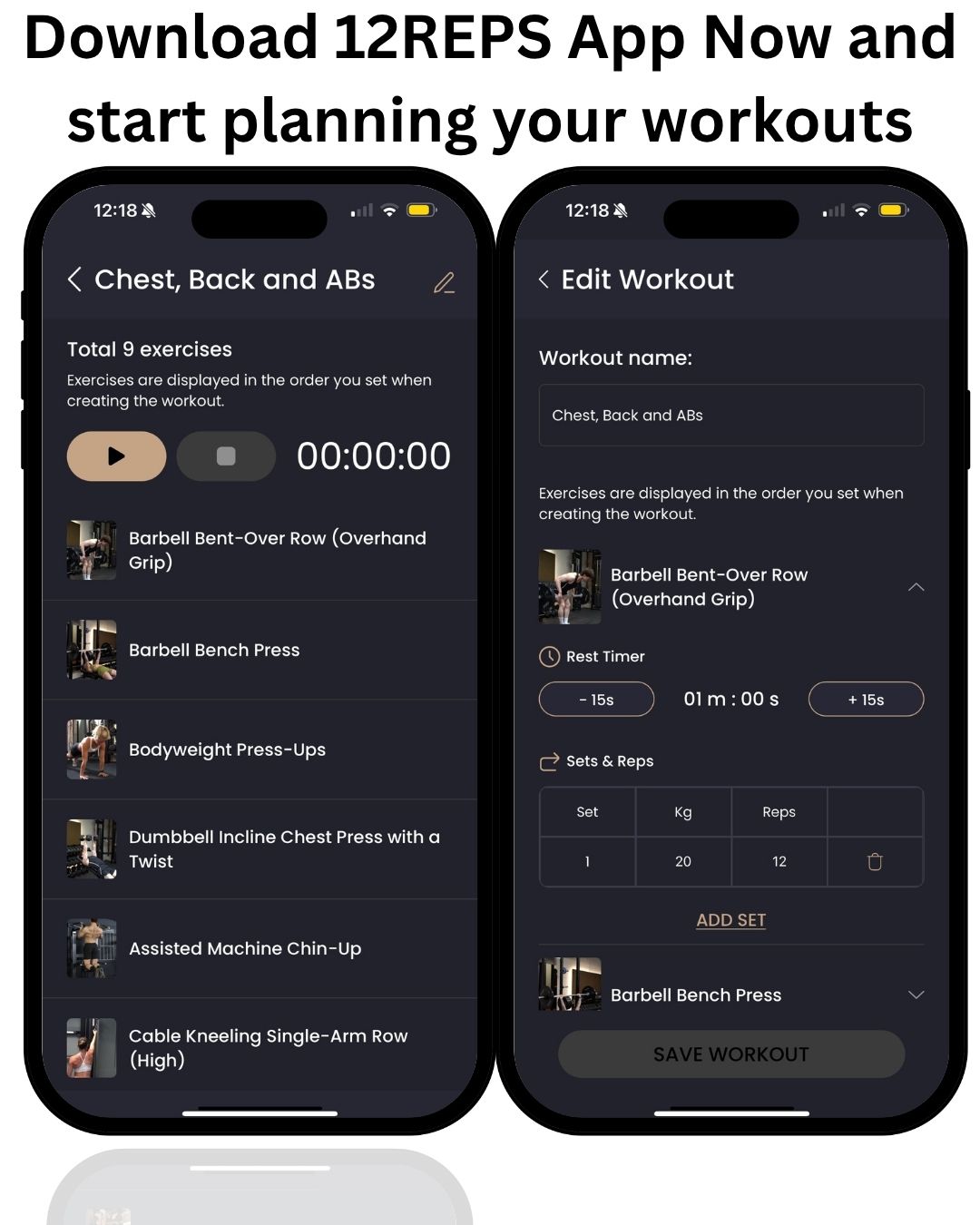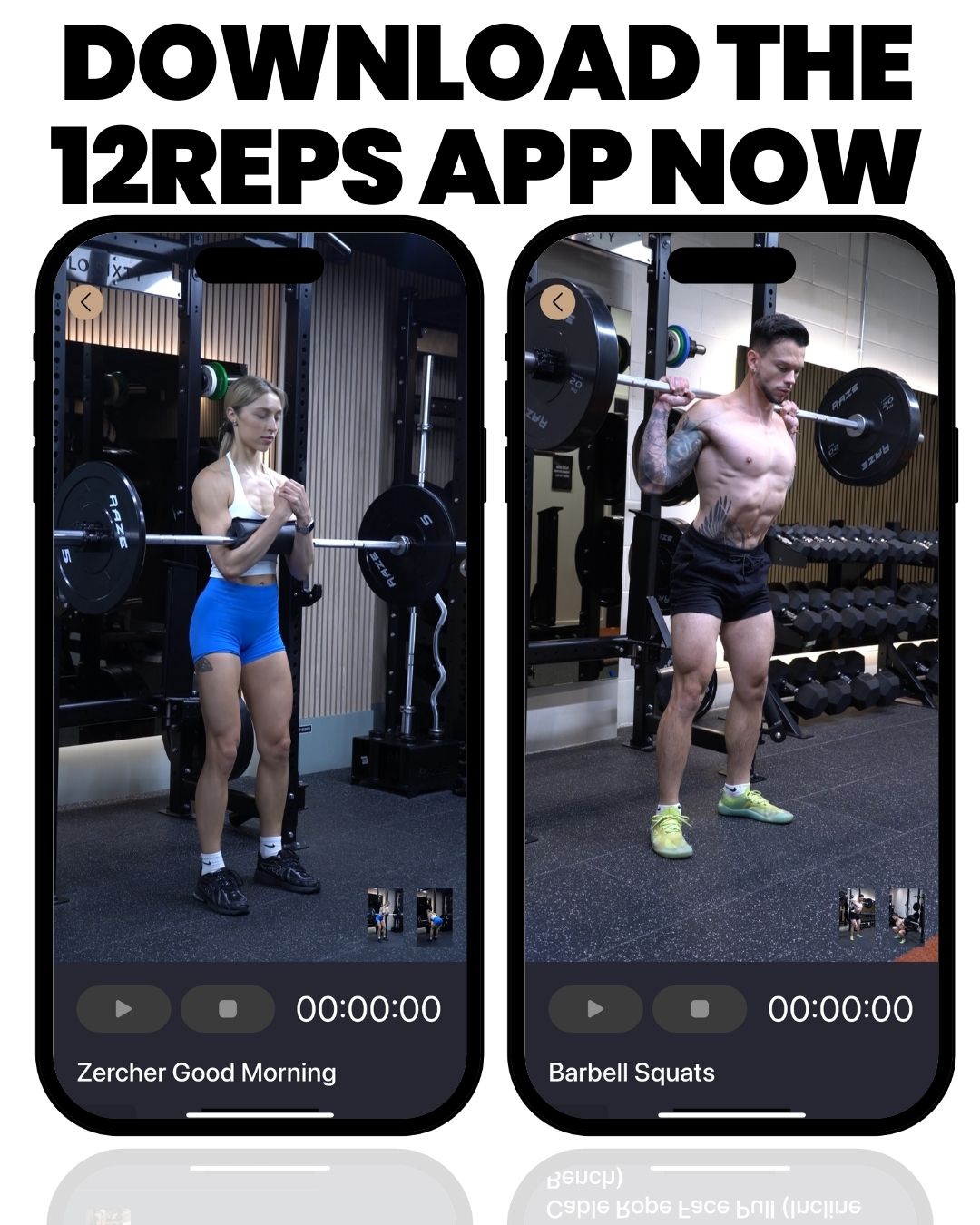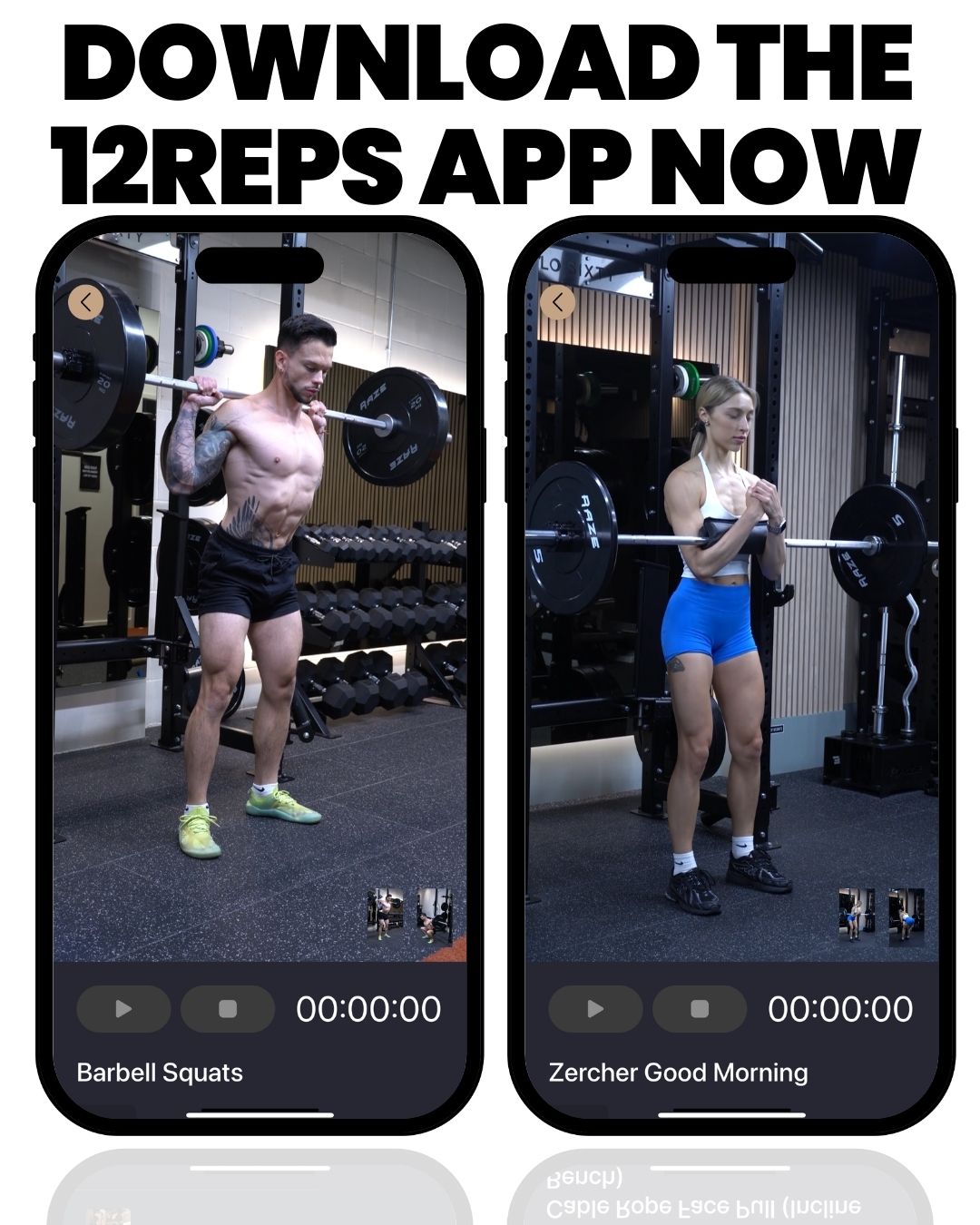Written by Will Duru, BSc (Hons) Sport and Exercise Science, Award-winning Personal Trainer with over 10 years of experience in strength training and optimising recovery
Today I want to share my favourite chest and biceps session from the 12REPS app. This workout combines seven brilliant exercises that work together to build muscle and strength. Whether you’re training at home or in a gym, this session will help you achieve your fitness goals.
The beauty of training chest and biceps together is how well they complement each other. Your chest muscles push the weight away from your body. Your biceps pull the weight towards you. When you train them in the same session, you get a complete upper body workout that saves time and delivers great results.
This workout includes the dumbbell incline press, dumbbell biceps curl, cable chest flys, rope biceps curl, barbell bench press, bar biceps curl, and press-ups. Each exercise targets different parts of your chest and biceps to ensure complete development.

Why This Workout Is So Effective
Your chest is made up of three main areas. You have the upper chest, middle chest, and lower chest. Most people focus too much on the middle chest and neglect the upper portion. This workout fixes that problem by including both incline and flat pressing movements.
Your biceps have two main parts – the long head and the short head. The long head gives your arms that peak when you flex. The short head adds width to your arms. This workout targets both parts using different grips and angles.
The combination of compound and isolation exercises in this session is perfect for muscle growth. Compound exercises like the bench press work multiple muscles at once. Isolation exercises like biceps curls target specific muscles. Together, they create the perfect recipe for building size and strength.
The order of exercises is also important. We start with the heaviest compound movements when you’re fresh. Then we move to isolation exercises as your muscles fatigue. This ensures you can lift the most weight possible while still getting a great pump.
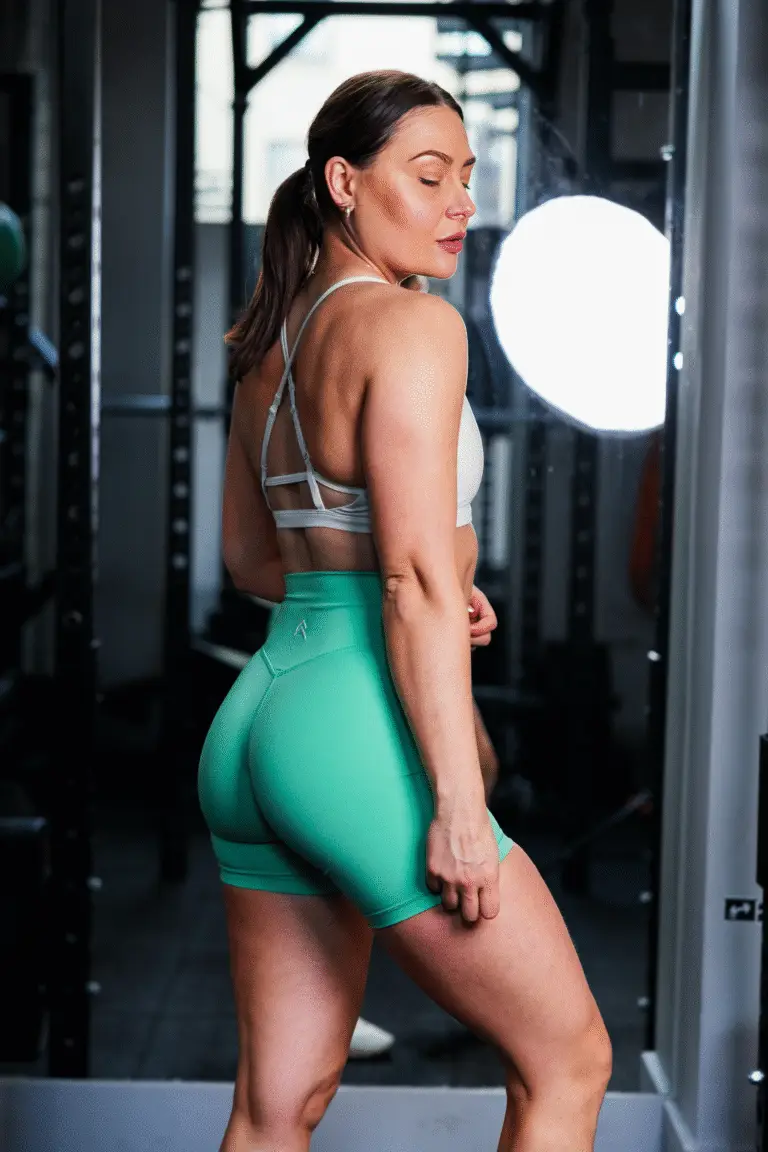
Complete Workout Structure
| Exercise | Warm-Up Set | Working Sets | Reps | Rest Period |
| Barbell Bench Press | 1 x 15 (light weight) | 5 x 10-12 | 10-12 | 120-180 seconds |
| Dumbbell Incline Press | 1 x 15 (light weight) | 5 x 10-12 | 10-12 | 90-120 seconds |
| Cable Chest Flys | 1 x 15 (light weight) | 5 x 10-12 | 10-12 | 60-90 seconds |
| Bar Biceps Curl | 1 x 15 (light weight) | 5 x 10-12 | 10-12 | 90-120 seconds |
| Dumbbell Biceps Curl | 1 x 12 each arm (light weight) | 5 x 10-12 each arm | 10-12 | 60-90 seconds |
| Rope Biceps Curl | 1 x 15 (light weight) | 5 x 10-12 | 10-12 | 60-90 seconds |
| Press Ups | 1 x 10 (bodyweight) | 5 x 10-12 | 10-12 | 60-90 seconds |
The Chest Exercises Explained
Exercise 1: Barbell Bench Press
The barbell bench press is the king of chest exercises. It works your entire chest, shoulders, and triceps. It’s also one of the best exercises for building overall upper-body strength and power.
How to do it: Lie on a flat bench with your feet firmly on the floor. Grab the barbell with hands slightly wider than shoulder width. Lower the bar to your chest, touching lightly at nipple level. Press the bar back up in a straight line. Keep your shoulder blades squeezed together throughout the movement.
Why it’s so important: The bench press allows you to use the heaviest weights. This makes it brilliant for building strength and muscle mass. It also teaches you how to generate power through your entire body.
Common mistakes to avoid: Don’t bounce the bar off your chest. Don’t let your elbows flare out too wide. Don’t arch your back excessively. Keep your core tight and your feet planted.
Exercise 2: Dumbbell Incline Press
The dumbbell incline press targets your upper chest better than any other exercise. This is the area that gives your chest that full, rounded look. Most people neglect their upper chest, which is why this exercise is so important.
How to do it: Set an incline bench to 30-45 degrees. Hold a dumbbell in each hand at shoulder level. Press the weights up and slightly together. Lower them slowly back to the starting position. Feel the stretch in your upper chest at the bottom.
Why it works so well: The incline angle targets the upper chest fibres specifically. Using dumbbells allows for a greater range of motion than a barbell. This means more muscle activation and better growth.
Exercise 3: Cable Chest Flys
Cable chest flys are the perfect isolation exercise for your chest. They provide constant tension throughout the entire range of motion. This creates an amazing pump and helps build that rounded chest shape.
How to do it: Set the cables at shoulder height. Grab a handle in each hand and step forward. Keep a slight bend in your elbows. Bring your hands together in front of your chest. Squeeze your chest muscles hard at the peak. Slowly return to the starting position.
Key points: Focus on squeezing your chest muscles, not just moving the weight. Keep the movement smooth and controlled. Don’t let the weight stack slam down between reps.
Exercise 4: Press Ups
Press-ups are the ultimate bodyweight chest exercise. They work your entire chest, shoulders, and triceps. They’re also brilliant for building core strength and stability.
How to do it: Start in a plank position with hands slightly wider than shoulder width. Keep your body in a straight line from head to heels. Lower your chest towards the floor. Push back up to the starting position. Keep your core tight throughout.
Making it easier or harder: Beginners can do press-ups on their knees or against a wall. Advanced lifters can elevate their feet or add weight with a backpack.
Exercise 5: Bar Biceps Curl
The barbell biceps curl is the classic arm building exercise. It allows you to use heavy weights and work both arms together. This makes it brilliant for building overall biceps mass and strength.
How to do it: Stand with feet shoulder-width apart. Hold a barbell with an underhand grip, hands about shoulder-width apart. Keep your elbows at your sides. Curl the weight up by bending your elbows. Squeeze your biceps at the top. Lower the weight slowly back down.
Why it’s so effective: The barbell curl lets you use heavier weights than dumbbell curls. This creates more tension in your biceps, which leads to better muscle growth. It also works both arms equally, preventing muscle imbalances.
Common mistakes: Don’t swing your body to lift the weight. Don’t let your elbows drift forward. Keep your wrists straight throughout the movement.
Exercise 6: Dumbbell Biceps Curl
The dumbbell biceps curl is perfect for working each arm independently. This helps fix any strength differences between your left and right arms. It also allows for a more natural movement pattern.
How to do it: Hold a dumbbell in each hand with arms at your sides. Keep your elbows tucked in. Curl one weight up while keeping the other arm still. Squeeze your biceps at the top. Lower slowly and repeat with the other arm.
Alternating vs simultaneous: You can curl both arms at the same time or alternate between them. Alternating allows you to focus on one arm at a time and use slightly heavier weights.
Exercise 7: Rope Biceps Curl
The rope biceps curl targets your biceps from a different angle. The neutral grip position works your brachialis muscle, which sits underneath your biceps. This helps create fuller-looking arms.
How to do it: Attach a rope to the low pulley of a cable machine. Grab the rope with a neutral grip (palms facing each other). Keep your elbows at your sides. Curl the rope up by bending your elbows. At the top, pull the rope ends apart slightly. Lower slowly back down.
Why it’s different: The rope allows your wrists to move naturally. The neutral grip targets different muscle fibres than regular curls. The constant tension from the cable provides a unique stimulus for growth.
Progressive Overload: Getting Stronger Every Week
Progressive overload is the secret to continuous muscle growth. It means gradually making your workouts harder over time. Without progressive overload, your muscles have no reason to grow bigger or stronger.
For this chest and biceps workout, I recommend adding weight each week. For the big compound exercises like bench press and incline press, try to add 2.5-5 pounds per week. For the isolation exercises like curls and flys, add 1-2.5 pounds per week. If you can’t add weight, try adding reps. If you’re doing 10 reps, aim for 11 or 12. Once you can do 12 reps easily with perfect form, it’s time to increase the weight and drop back to 10 reps.
Another way to progress is by improving your technique. Focus on squeezing the muscles harder. Slow down the lowering part of each rep. These small improvements can lead to big gains over time.
Keep a training diary. Write down the weights, sets, and reps for each exercise. This helps you track your progress and plan your next workout. Seeing your numbers go up week after week is incredibly motivating.
Timing Your Rest Periods for Maximum Results
Rest periods are more important than most people think. Too little rest and you won’t recover enough for your next set. Too much rest and you lose the training intensity that drives muscle growth.
For the heavy compound exercises like bench press and incline press, rest 120-180 seconds between sets. These exercises use multiple muscle groups and require more recovery time.
For the isolation exercises like curls and flys, rest 60-90 seconds between sets. These exercises target smaller muscle groups that recover faster.
Use a timer on your phone or watch. When it goes off, start your next set. This keeps your workout moving and maintains the intensity that drives results.
As you get fitter, you can gradually reduce rest times. This is another form of progressive overload that makes your workouts more challenging.
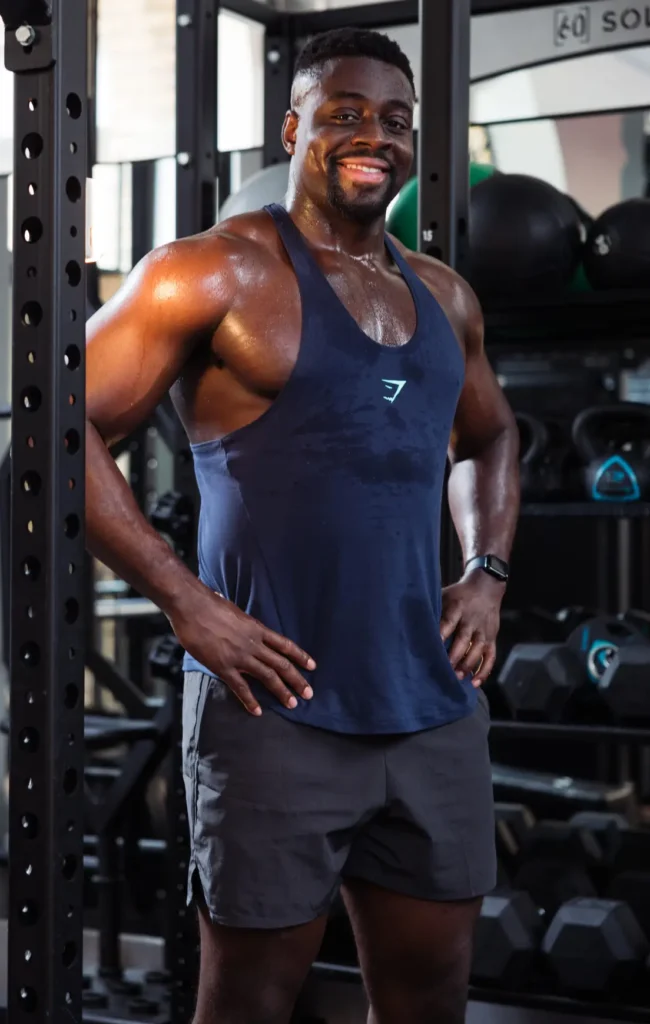
Nutrition for Muscle Growth
Training is only half the equation for building muscle. What you eat is equally important. Protein is the most crucial nutrient for muscle growth and recovery.
I recommend eating 0.8-1.2 grams of protein per pound of body weight each day. So if you weigh 150 pounds, aim for 120-180 grams of protein daily.
Good protein sources include chicken, fish, eggs, dairy products, beans, and protein powder. Try to include some protein with every meal to keep your muscles fed throughout the day.
Timing your protein intake can also help. Try to eat 25-40 grams of protein within two hours after your workout. This helps kickstart the muscle recovery process.
Don’t forget about carbohydrates and fats. Carbs provide energy for your workouts. Fats help with hormone production. Aim for a balanced diet that includes all three macronutrients.
Stay well hydrated too. Drink plenty of water before, during, and after your workouts. Even mild dehydration can hurt your performance and slow your recovery.
The 12REPS App: Your Personal Training Partner
The 12REPS app takes the guesswork out of strength training. It creates personalised workouts based on your goals, available equipment, and time constraints. This means every workout is perfectly designed for your situation.
The app includes detailed video tutorials for every exercise. You can watch them before your workout to learn proper form. This helps prevent injuries and ensures you get the best possible results.
The built-in timer helps you stick to your rest periods. The progress tracking shows how you’re improving over time. You can see your strength gains week by week, which is incredibly motivating.
The app also adjusts your workouts as you get stronger. It automatically increases weights and reps based on your progress. This ensures you’re always following the principle of progressive overload.
Download the 12REPS app today and visit just12reps.com for more information. It’s like having a qualified personal trainer available 24/7.
Conclusion
This chest and biceps workout is one of my most effective training sessions. It combines the best exercises for building muscle and strength in your upper body. The mix of compound and isolation exercises ensures complete development.
Remember to focus on proper form before adding weight. Use progressive overload to keep getting stronger. Time your rest periods for optimal results. Eat enough protein to support muscle growth.
Consistency is the key to long-term success. Stick to this programme for at least 8-12 weeks. You’ll be amazed at how much your chest and biceps develop. Your journey to a bigger, stronger upper body starts with your next workout. Make it count.


